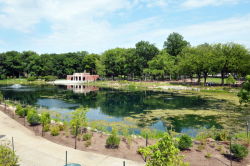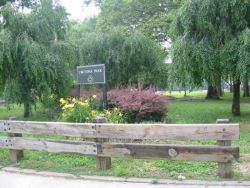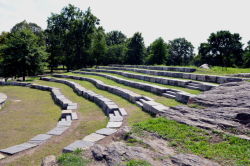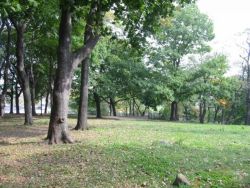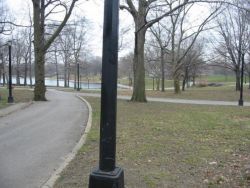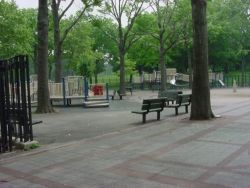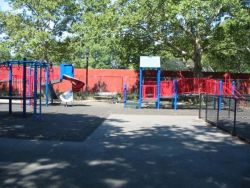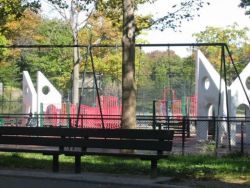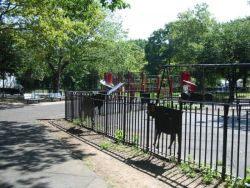Crotona Park
Martin Van Buren Playground
How did this site become a playground?
The City acquired this property from Andrew Bathgate as part of the consolidation of the Bronx park system in 1888. Even before it was city land it served as a park. The Bathgate family permitted members of the public to picnic at their scenic estate nearby at what is now known as Indian Lake. The first playground in the borough opened in 1914, and reports stated that children “are drawn to these playgrounds where they were able to give full vent to their excess of feelings, and enjoy to the fullest extent those kinds of exercise which were conducive to their well-being both mentally and physically.”
Who is this playground named for?
Best known as the eighth president of the United States (1837-1841), Martin Van Buren (1782-1862) was born in Kinderhook, New York in 1782. He completed his formal education by the age of 14 and was admitted to the New York state bar at the age of 21. In 1812, he was elected to the State Senate and rose rapidly to become a state party leader. This brought him into conflict with DeWitt Clinton, the powerful governor of New York. The two battled for control of the state Democratic-Republican party during the early 19th century, with Van Buren emerging as the victor. Van Buren’s followers came to be known as Bucktails, for the bucktails they wore on their hats when they attended political meetings.
In 1821, Van Buren was elected to the United States Senate where he again rose to prominence. Seven years later, he was elected governor of New York, but resigned after only one year when President Andrew Jackson offered him an appointment as Secretary of State. Van Buren proved himself and was named Jackson’s running mate for the next election. Elected Vice President in 1832, Van Buren served until 1836, when, with Jackson’s firm support, he was elected President by a wide margin.
Although Van Buren’s presidency opened with great promise, it soon floundered. The Panic of 1837, which drove the country into a depression, as well as a series of incidents that nearly led to another war with Great Britain destroyed Van Buren’s popularity. In the election of 1840, he lost to William Henry Harrison (1773-1841). Despite his challenges, Van Buren implemented several important government innovations during his presidency, including an independent treasury system, which ended federal reliance on state banks, and a 10-hour workday for federal employees. After his presidency, Van Buren remained active in New York and national politics. He died in his hometown of Kinderhook in 1862, at the age of 79.
Check out your park's Vital Signs
Clean & Safe
Green & Resilient
Empowered & Engaged Users
Share your feedback or learn more about how this park is part of a
Vital Park System

